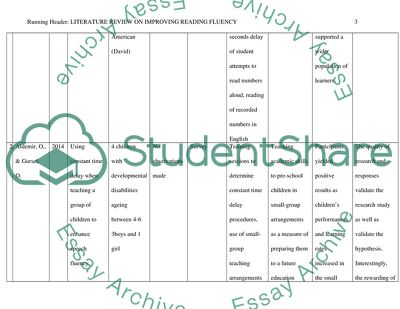Assignment - Literature Review on Improving Reading Fluency. Retrieved from https://studentshare.org/education/1697522-assignment-literature-review-on-improving-reading-fluency
Assignment - Literature Review on Improving Reading Fluency. https://studentshare.org/education/1697522-assignment-literature-review-on-improving-reading-fluency.


